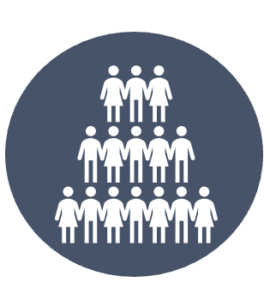![]()
Nearly every instance of CMT is caused by the mutation of a single gene and most genetic causes of CMT have been identified. The era of genetic medicine has already begun. The FDA first approved genetic medicines in 2016/2017. This set the foundation for a precision medicine approach with treatments focused on specific subtypes of CMT where the probability of success is greatest. It also allows researchers to use genetic medicines to try to correct the defect. In fact, the past decade has been a period of increasing investment and growth in neuromuscular disease pipelines spurred by the FDA approval of therapeutics for disabling monogenic diseases like SMA. CMT is well positioned within the biotech/pharma industries for a successful treatment in the near future.
![]()
Improved outcome measures and biomarkers. Access to tissue for biomarkers and pharmacodynamic measurements has been an obstacle for the treatment of central nervous system diseases, but peripheral nervous system diseases like CMT benefit from easy access to relevant tissues and electrophysiology. To de-risk clinical trials, a substantial amount of effort over the last decade has been devoted to creating and validating more sensitive, specific, and treatment responsive outcome measures and biomarkers. International efforts have developed functional outcome measures specific for CMT that span ages 6 months to 65 years (ie: the CMT Infant and Toddler Scale, the CMT Peds Scale, and the CMT Functional Outcome Measure). In addition, MRI muscle fat fraction can detect clinical deterioration in as little as one year, and next generation biomarkers from skin biopsy and blood may further de-risk trials in the coming few years, making clinical trials smaller, faster, and more likely to detect a treatment effect.

Due to its prevalence – approximately 150,000 people in the United States and more than 3 million around the world – CMT has a well-established clinical research network (the INC) along with natural history studies including several thousand individuals, making clinical trial design and recruitment less challenging than other rare diseases. In fact, several clinical trials (up to and including Phase III trials) have been successfully completed. Moreover, CMT patient advocacy organizations like CMTRF.org are a strong driver of regulatory success in clinical development.
![]()
CMT research is at the forefront of science. Cell- and tissue-targeted drug delivery systems, such as modified AAVs, lipid nanoparticles, polymer nanoparticles are easily within reach. More next generation (beyond CRISPR/Cas9) gene editing technologies are emerging. And small molecule drugs that promote healthy nerve structure and function are in the works.

The pharma industry financial incentives are there. The global market just for the most common subtype (CMT1A) has been estimated at $1 billion annually. This could help more than just CMT. Advances in CMT research are likely to benefit more prevalent conditions impacting motor neurons (ALS), sensory neurons (diabetic peripheral neuropathy), and Schwann cells (acoustic Schwannoma, neurofibromatosis) giving biotechs and pharmas a greater incentive.
For the first time in CMT history we are not waiting for the science. It is waiting on us. This race to the finish line will be expensive and still uncertain. Yes, there will be unforeseen failures and disappointing clinical trial outcomes, but the more that families impacted by CMT step up and contribute to research, the more shots on goal we will get. It only takes one to be successful.
